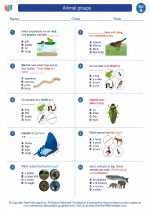Kidneys
The kidneys are two bean-shaped organs located on either side of the spine, below the ribcage. They play a crucial role in maintaining the body's overall health by filtering waste and excess fluids from the blood to form urine. The kidneys also help regulate blood pressure, produce certain hormones, and assist in the production of red blood cells.
Functions of the Kidneys:
- Filtration: The kidneys filter waste and toxins from the blood to be excreted as urine.
- Fluid Balance: They regulate the balance of fluid in the body, ensuring that the proper amount of water is retained or excreted.
- Blood Pressure Regulation: The kidneys help regulate blood pressure by managing the balance of sodium and potassium in the body.
- Hormone Production: They produce hormones that help in the production of red blood cells and regulate calcium metabolism.
Structure of the Kidneys:
- The outer layer of the kidney is called the renal cortex, while the inner region is known as the renal medulla.
- The functional units of the kidneys are called nephrons, which are responsible for filtering the blood and producing urine.
- Each kidney is connected to the bladder by a tube called the ureter, through which urine passes from the kidneys to the bladder.
Common Kidney Problems:
Some common kidney problems include kidney stones, urinary tract infections, kidney failure, and kidney disease. It's important to maintain a healthy lifestyle, including staying hydrated, eating a balanced diet, and getting regular exercise to support kidney health.
Study Guide:
- What are the functions of the kidneys?
- Describe the structure of the kidneys.
- What are some common kidney problems?
- How can you maintain kidney health?
[Kidneys] Related Worksheets and Study Guides:
.◂Science Worksheets and Study Guides First Grade. Animal groups
Study Guide Animal groups
Animal groups  Worksheet/Answer key
Worksheet/Answer key Animal groups
Animal groups  Worksheet/Answer key
Worksheet/Answer key Animal groups
Animal groups  Worksheet/Answer key
Worksheet/Answer key Animal groups
Animal groups  Vocabulary/Answer key
Vocabulary/Answer key Animal groups
Animal groups 

 Worksheet/Answer key
Worksheet/Answer key
 Worksheet/Answer key
Worksheet/Answer key
 Worksheet/Answer key
Worksheet/Answer key
 Vocabulary/Answer key
Vocabulary/Answer key

The resources above cover the following skills:
LIFE SCIENCE
From Molecules to Organisms: Structures and Processes
Design a solution to a human problem by using materials to imitate how plants and/or animals use their external parts to help them survive, grow, and meet their needs (e.g., outerwear imitating animal furs for insulation, gear mimicking tree bark or shells for protection).